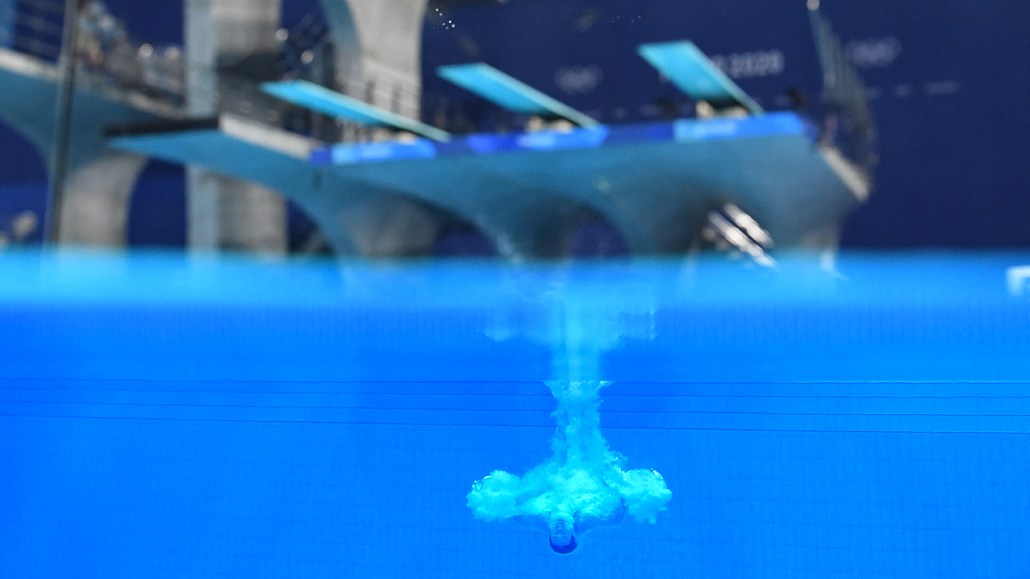
A nearly splashless, rip entry dive results when divers bend at the waist after they enter the water to create a large cavity of air.
FRANCOIS-XAVIER MARIT/AFP via Getty Image

A nearly splashless, rip entry dive results when divers bend at the waist after they enter the water to create a large cavity of air.
FRANCOIS-XAVIER MARIT/AFP via Getty Image